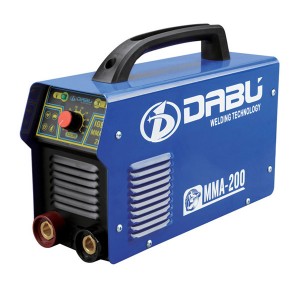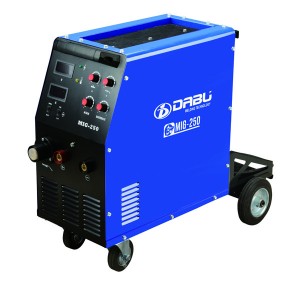1.Classification
Arc welding can be divided into manual arc welding, semi-automatic (arc) welding, automatic (arc) welding. Automatic (arc) welding usually refers to submerged arc automatic welding - the welding site is covered with a protective layer of flux, the photonic wire made of filler metal is inserted into the flux layer, and the welding metal generates an arc, the arc is buried under the flux layer, and the heat generated by the arc melts the weld wire, flux and base metal to form a weld, and the welding process is automated. The most commonly used is manual arc welding.
2.Basic process
The basic process of manual arc welding is as follows: a. Clean the welding surface before welding so as not to affect the quality of arc ignition and weld seam. b. Prepare the joint form (groove type). The role of the groove is to make the welding rod, welding wire or torch (nozzle that sprays acetylene-oxygen flame during gas welding) directly into the bottom of the groove to ensure welding penetration, and is conducive to slag removal and facilitate the necessary oscillation of the welding rod in the groove to obtain a good fusion. The shape and size of the groove mainly depend on the welded material and its specifications (mainly thickness), as well as the welding method adopted, the form of weld seam, etc. Common grooved types in practical applications are: curved joints - suitable for thin parts with a thickness of <3mm; Flat groove - suitable for thinner parts of 3~ 8mm; V-shaped groove - suitable for workpieces with a thickness of 6~20mm (single-sided welding); Schematic diagram of weld groove type X-type groove - suitable for workpieces with a thickness of 12~40mm, and there are symmetrical and asymmetrical X grooves (double-sided welding); U-shaped groove - suitable for workpieces with a thickness of 20~50mm (single-sided welding); Double U-shaped groove - suitable for workpieces with a thickness of 30~80mm (double-sided welding). The groove angle is usually taken from 60 to 70 °, and the purpose of using blunt edges (also called root height) is to prevent weldment from burning through, while the gap is to facilitate welding penetration.
3.Main parameters
The most important parameters in the welding specifications of arc welding are: welding rod type (depending on the material of the base material), electrode diameter (depending on weldment thickness, weld position, number of welding layers, welding speed, welding current, etc.), welding current, welding layer, etc. In addition to the above-mentioned ordinary arc welding, in order to further improve the quality of welding, it is also used: gas shielded arc welding: for example, argon arc welding using argon as a shielding gas in the welding area, carbon dioxide shielded welding using carbon dioxide as the shielding gas in the welding area, etc., the basic principle is to weld with the arc as the heat source, and at the same time continuously spray protective gas from the nozzle of the spray gun to isolate the air from the molten metal in the welding area to protect the arc and the liquid metal in the welding pool from oxygen, nitrogen, Hydrogen and other pollution to achieve the purpose of improving the quality of welding. Tungsten argon arc welding: a metal tungsten rod with a high melting point is used as an electrode that generates an arc when welding, and arc welding under the protection of argon, which is often used in stainless steel, high-temperature alloy and other welding with strict requirements. Plasma arc welding: This is a welding method developed by tungsten argon arc welding, in the nozzle aperture of the machine Arc welding current size judgment: small current: narrow welding bead, shallow penetration, easy to form too high, not fused, not welded through, slag, porosity, weld rod adhesion, arc breaking, no lead arc, etc. The current is large: the weld bead is wide, the depth of penetration is large, the bite edge, the burn-through, the shrink hole, the splash is large, the overburn, the deformation is large, the weld tumor and so on.
Post time: Jun-30-2022

